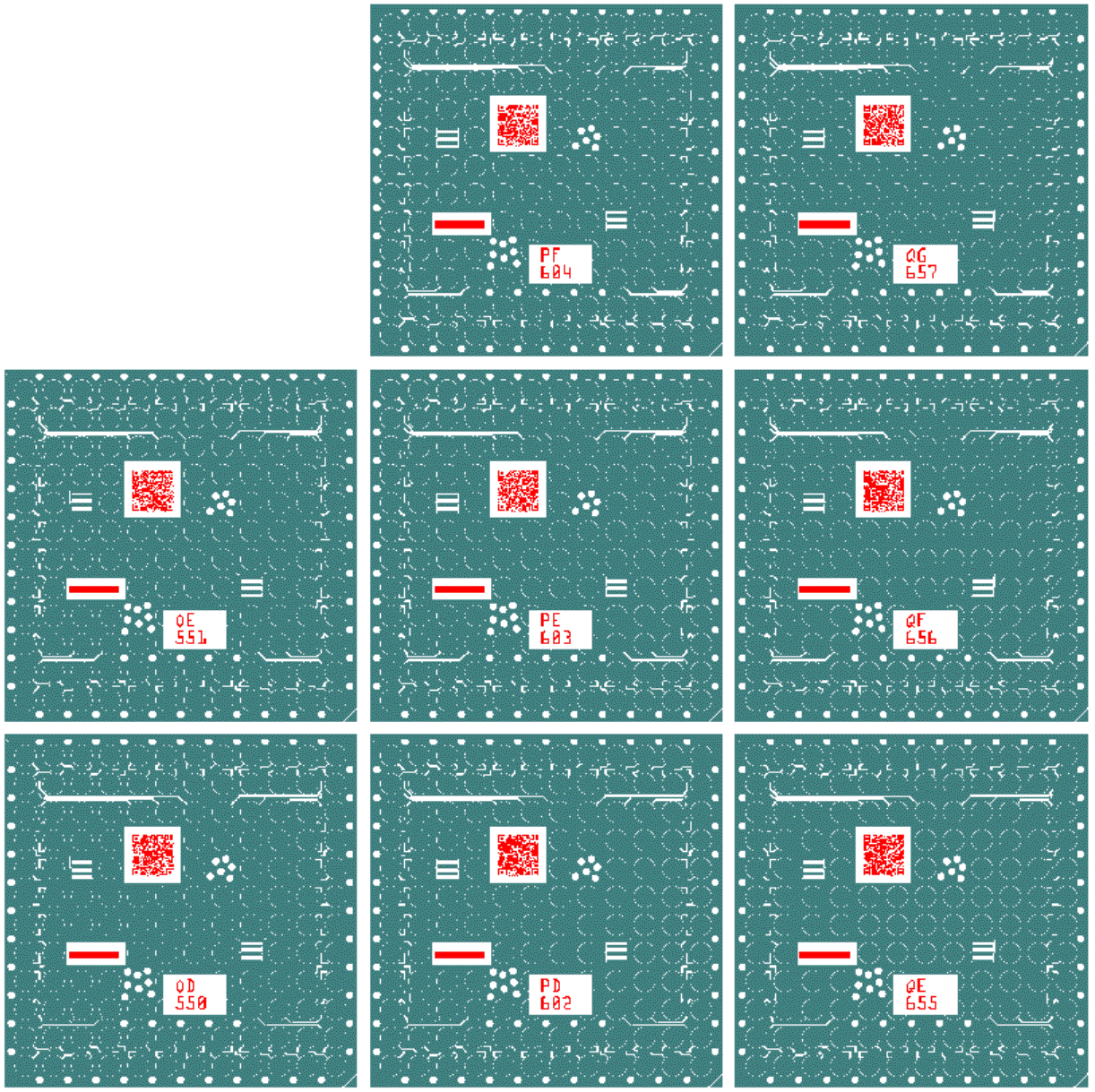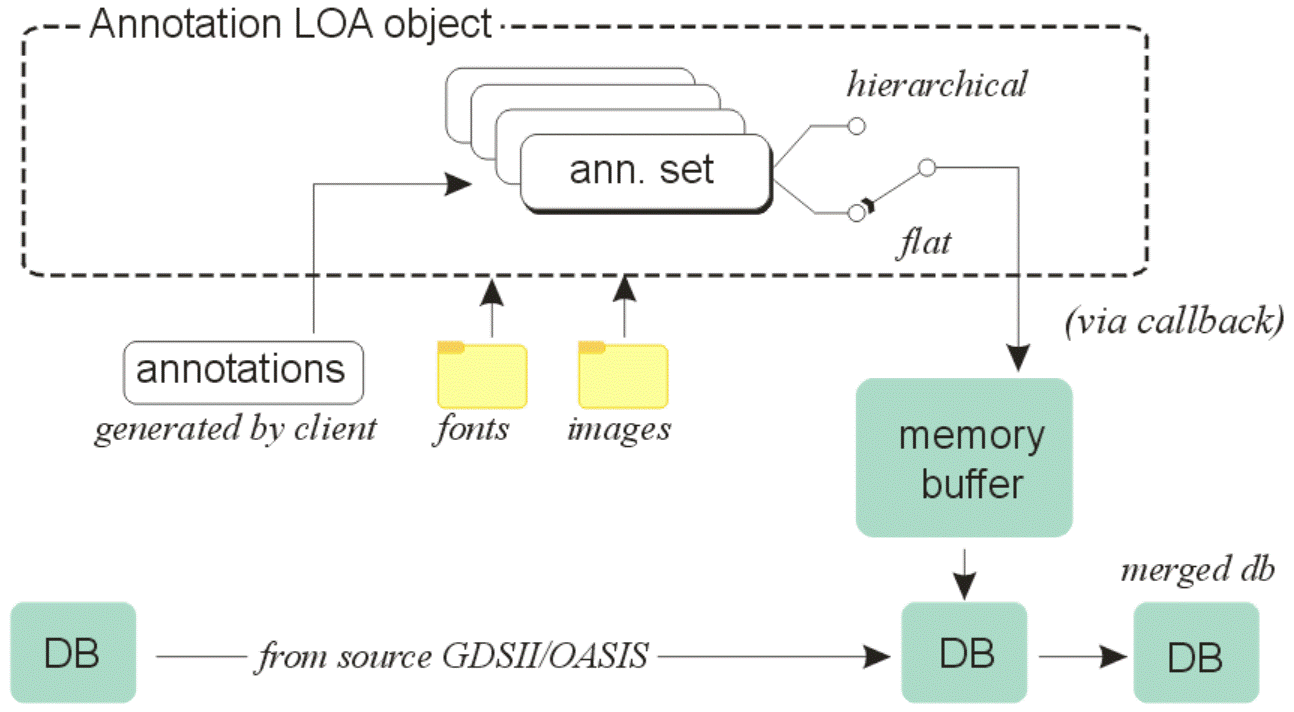
Often a direct-write mask machine should also be able to "serialize" each device or circuit on the substrate. Further, there is often the need to place identification text and images (typically in the form of QR codes) either on each device or on the substrate.
Doing this on a "clean" GDSII or OASIS layout has been quite difficult. The QisMLOA extension is intended to speed up the implementation of serialization -- especially in cases where the substrate has tens of thousands of unique serial identifiers.
The client still has to make a number of computations to determine the text/QR code and the location of each annotation but the actual mechanics of merging this data into the source GDSII file (or of directly rasterizing the serializations while rasterizing the source data) is now handled efficiently by QisMLOA.
Depending on how many annotations and how fast the user needs this process to be, additional concurrent licenses can be purchased which will provide a linear speed up.

Figure 1 - section of a wafer with each device annotated.

Figure 2 - Data flow for QisMLOA annotation extension.
Notes:
1. The extension expects that a GDSII or OASIS file has been loaded into QisMLib
2. The client uses several function calls to define the annnotation parameters and to create each annotation.
3. The client determines whether the output from an annotation will be flat or hierarchical
4. For high performance applications, the client can launch multiple threads for processing sets (based on available licenses)
5. Bitmap images must be in Artwork's LG-RAW bitmap format.
6. Fonts are either in TTF or AutoDesk .SHX format.
The SFGEN program also includes the Text/Image annotation function and there are some details as to the implementation on that page.
You can review detailed API documentation and function calls for QisMLOA here.